In this guide, we take a look at the Oculus Rift S vs HP Reverb G2 to decide which VR headset is better! We’ll take a look at the display, specs, gameplay, requirements and more for each headset in detail.
Why the Rift S and G2? The Oculus Rift S is the highest selling PC VR headset of all time. It has always been aggressively priced at $399 per headset. This has allowed Oculus to stay ahead of HTC in the consumer VR market.
The HP Reverb G2 has a lot of hype and is a good preview at the potential of WIndows Mixed Reality (WMR). Early reviews are really good, and the $599 price tag is the closest Oculus has seen to good competition.
So if you want a good side-by-side comparison of the Oculus Rift S vs HP Reverb G2, keep reading!
- How to Buy the Oculus Rift S vs HP Reverb G2
- Quick Comparison Table: Oculus Rift S vs HP Reverb G2
- Release Date
- Oculus Rift S vs HP Reverb: Design
- Display Resolution
- Display Quality
- Price
- IPD Adjustment
- Sensor Tracking
- Audio Quality
- Controllers
- Exclusive Games
- PC Requirements
- Oculus Rift S vs HP Reverb G2: Which Headset Should I Buy?
How to Buy the Oculus Rift S vs HP Reverb G2
There are two main ways to buy the Rift S headset around the world:
In addition, the device can be found in stores at Best Buy, Walmart (US Only), B&H, and online at New Egg and Lenovo.
The HP Reverb G2 can currently be pre-ordered on the official HP website. An official release date has not been announced, but September 15th has been rumored for the past few months.
The original G1 headset was available to buy at Best Buy stores, so it’s a safe guess that the G2 will also be available to purchase there.
Quick Comparison Table: Oculus Rift S vs HP Reverb G2
The table below shows a comparison of the basic specs on these two headsets. As you can see, there is not a lot of difference at face value. However, the devil is always in the details. Underneath the table, we go into detail about each spec in order to determine which VR headset is better.
| Oculus Rift S | HP Reverb G2 | |
| Display | 1 x LCD | 2 x 2.89” LCD |
| Resolution | 1280 x 1440 per eye | 2160 x 2160 per eye |
| Field of view (FoV) | 115” | 114” |
| IPD Adjustment | No | Yes |
| RGB Subpixel Stripe | Yes | Yes |
| Refresh Rate | 80Hz | 90Hz |
| Weight | 571g | 500g |
| Tracking | 5 cameras | 4 cameras |
| Cable | 5m Desktop cable | 6m Desktop cable |
Release Date
Oculus announced the Rift S VR headset on March 20, 2019 during the annual Game Developers Conference (GDC). Shipments began on May 21st the same year. It is Oculus’ flagship PCVR headset, meaning that a tethered connection to a PC is required to play. The Oculus Quest is the wireless headset that runs on Android and does not require any computer in order to play.
The new HP Reverb G2 was announced in a May 28, 2020, announcement. On the same day, HP announced that the device was available for preorder on the HP website.
Oculus Rift S vs HP Reverb: Design
The Rift S was built as a joint project with Lenovo. It is simple, black, and curved. Similar to the original Rift, it carries some design elements reminiscent of the Lenovo Mirage Solo and Explorer headsets.
The visor is mounted on a large, curved piece of plastic that rests against your forehead. It has side straps that extend around to another padded plastic arch that runs across the back of your head. There is a wheel on the back arch that tightens and loosens the entire assembly. You can further adjust this with the elastic top strap’s hook and loop fasteners to find a proper fit.

On the other hand, the Reverb G2 is a slight upgrade to the original HP Reverb design. The head fit and straps mostly stay the same as the original headset. An improved face cushion allows for better weight distribution. The cushion on the back of your head is not as prominent on the G2.

Overall, we give the advantage in comfort to the Oculus Rift S. However, this should only be noticeable on long playing sessions. Short, casual VR gamers should not be too concerned with the quality of either headset design.
Display Resolution
The Rift S comes with a single LCD panel that displays 1,280 by 1,440 resolution per eye. The high quality of the display reduces the screen door effect, god rays, and other inconsistencies in the image. Oculus has done a lot to the hardware and software design of their headset to keep it high quality. It’s consistently had high reviews even though the specifications are lower on paper than others.

For the G2, it comes with two mura-free panels that display 2160 x 2160 resolution per eye. The display is improved over the Reverb G1, which had problems with showing a screen door effect in the image.
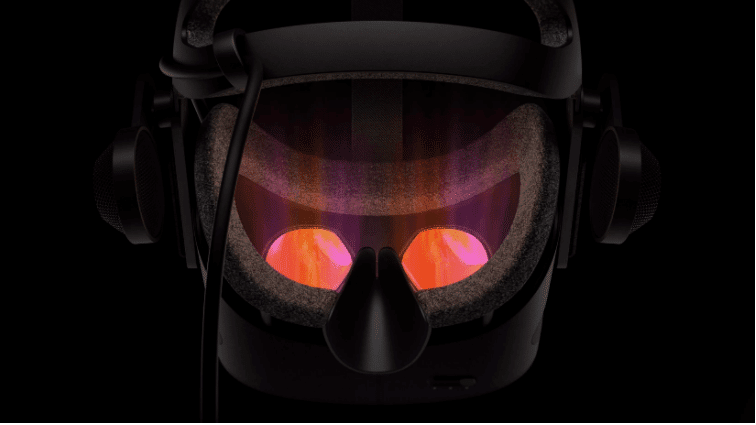
The refresh rate on the Oculus Rift S a bit lower than the G2 at 80 Hz vs 90 Hz, but this is hardly noticeable.
The field of view (FoV) is roughly the same for both headsets, at around 115 degrees.
Display Quality
To put simply, HP Reverb G2 knocks Rift S out of the park with its astonishing and borderline photorealistic quality of picture. And there are several reasons for it.
For starters, the new HP headset sports two full RGB stripe 2160 x 2160p LCD panels and 90 Hz frame rate. This resolution is currently one of the highest on the market, surpassing Rift S’ 1280 x 1440 per eye.
The HP Reverb G2 display is mura-free, which means you’ll be able to see the edges of your screen as clearly as the center. It uses a completely revamped pair of Fresnel lenses that are a huge step-up from the ones the original Reverb headset, the G1, used. Red smearing, a drag of red colors, have been removed. And chromatic aberration, the cloudy color separation on the edge of the lenses, has been reduced greatly too.Got rid of red smearing, which is a drag of red colors when you move your head.
Reduced chromatic aberration, which is color separation on the edges of the lenses which create a cloudy effect.
With the same FOV, the G2’s higher display resolution is really noticeable when you put the headset on. It has the clear advantage in color, contrast, and display quality. Dare we say that it’s the highest quality display for virtual reality ever created.
The Oculus Rift S display isn’t bad. The technology is two years old and is optimized heavily by Oculus’ software. We expect that the successor to the Rift S will be in line or better than the G2 when it is finally released.
Price
For price between the Oculus Rift S vs HP Reverb G2, the Rift S is the clear winner. The Oculus Rift S is currently available for $399 while the Reverb G2 is set to hit the shelves at $599.
It is well-known that Oculus sells their headsets at or below the cost it takes to make them. Then, they make the revenue back through the games and accessories it sells in the official Oculus store. This advantage allows Facebook to keep costs low to entice customers.
To give the Rift S more of an advantage, there are rumors that HP is raising the price of the device to $699 soon.
IPD Adjustment
While G2 has a physical IPD slider, the Rift S doesn’t. An IPD slider allows users to adjust the spacing between the lenses to be optimally aligned with their eyes. Optimal IPD alignment is important for comfort, clarity, and immersion.
The Reverb G2 IPD adjustment ranges from 60 mm to 68 mm. With this you adjust the slider on the headset, the WMR software on your PC automatically updates the software IPD setting to match.
The Oculus Rift S only contains a software adjustment IPD. In the software settings, you can change the IPD but it doesn’t affect the actual distance of the lenses between your eyes.
Sensor Tracking
Both HP Reverb G2 and Oculus Rift use an inside tracking system to track your movements in VR.
The HP Reverb G2 sports a 6 degrees of freedom inside tracking system. Four cameras placed in front and at both sides of the headset. Some fans have noticed that there is no camera facing upward, possibly leaving some key dead space in the tracking.
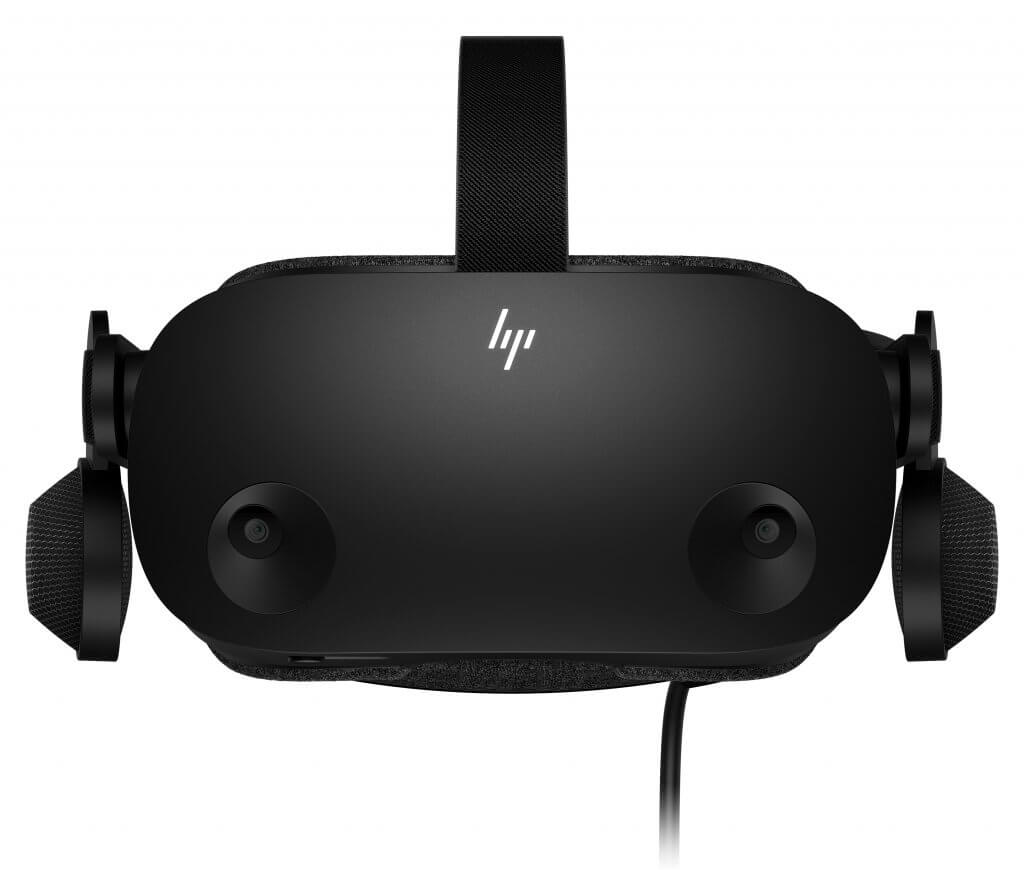
The Rift S contains 5 cameras spaced around the headset in all directs.
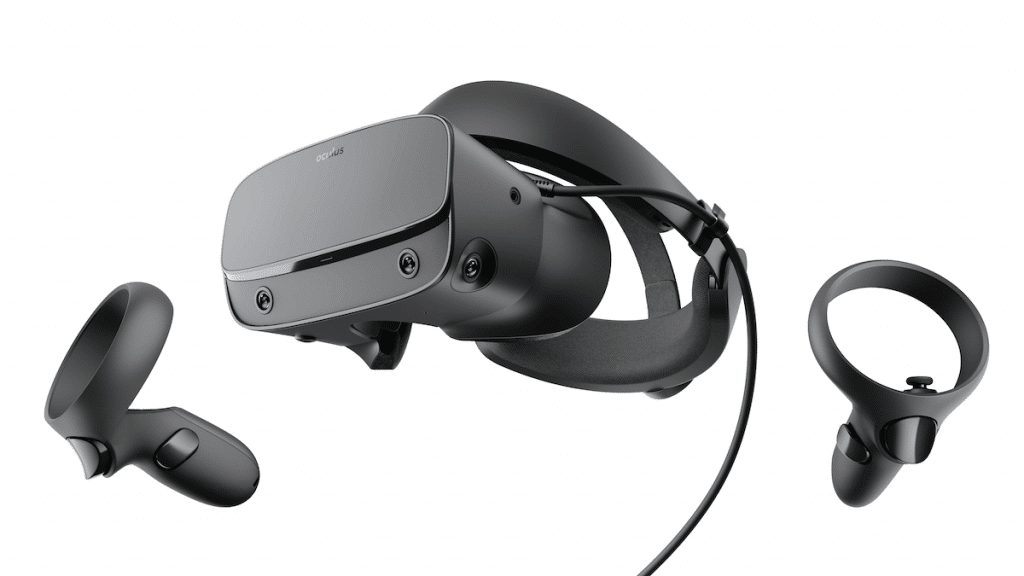
With the inside tracking, you don’t need to install any external sensor stations to track your movements. The inside tracking works just fine and there are no tracking issues when controllers collide or take to the extreme positions on edges.
Oculus Rift S vs HP Reverb G2 sensors, the G2 inside-out tracking system is a bit inferior. Due to camera placement, G2 can lose track of controllers at the extreme top and bottom positions, whereas Rift S don’t have issues. Oculus created the benchmark for inside-out VR tracking and still appear to be the king in this regard.
Audio Quality
HP Reverb G2 provides users with great spatial audio sound of the highest-quality because it uses the same speakers as Valve Index does. And Valve’s audio system is currently rated as one the best on the market. The removable headphones float over your ears by 10 mm and can be adjusted for custom fit.
The only thing to mention is that the brace works differently compared to Valve’s mechanism and the adjustment levels are a bit more limited.
The current demo headsets don’t feature 3.5 mm audio jack, so you won’t be able to use your own headphones with it. Given the high out-of-box quality of speakers you probably won’t need to. As for the microphone, the new Reverb uses the one that is different from Valve Index, but the quality is great for the money.
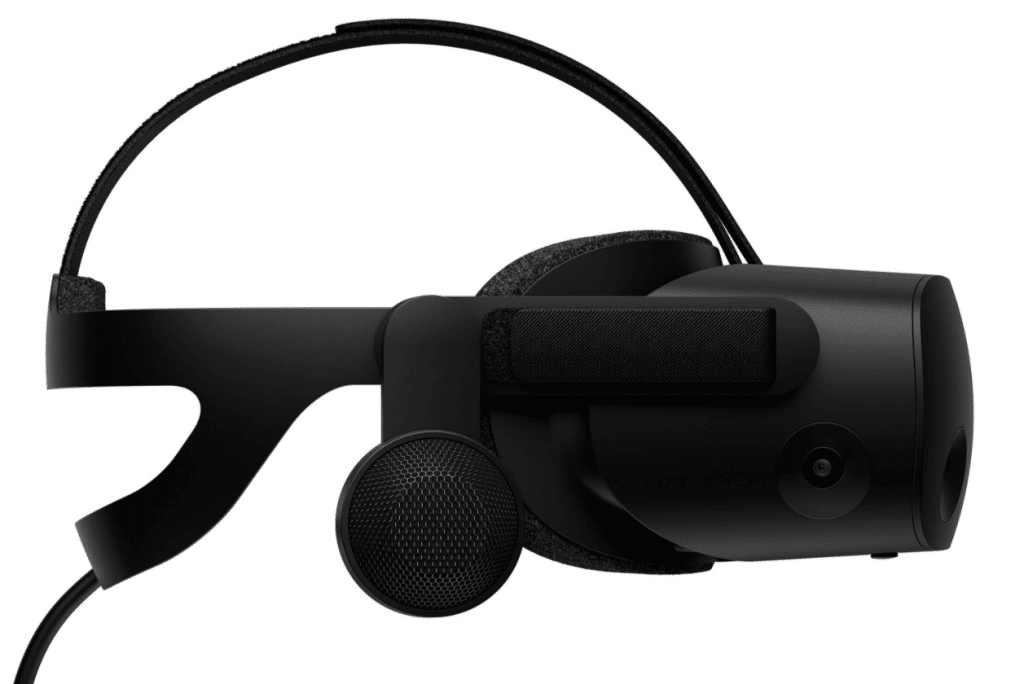
The Oculus Rift S has an integrated audio system with a 3.5 mm headphone jack that lets you use your own favorite headphones. The two speakers on the Rift S are inside the headband, and that means there are no problems with connections. However, they may pose a problem if you use the headset in a room with people, because the sound is shared with everybody.
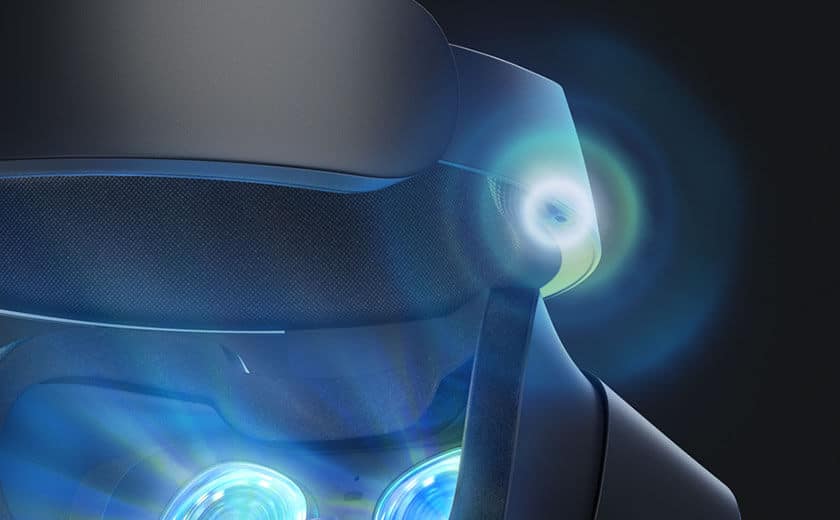
Oculus Rift S vs HP Reverb audio quality, the G2 audio quality is better. The on-ear headphones provide a better level of immersion. If you have your own headphones that you like using though, the Rift S is superior.
Controllers
The Oculus Rift S controllers are second generation touch controllers. They each contain a halo ring, which houses the different sensors that interact with the inside-out technology. Your index and middle fingers rest on a capacitive button that tracks your touch vs press. There have been little complaints about the touch controllers in general.
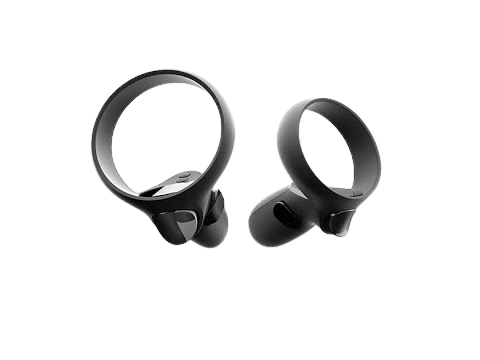
The HP Reverb G2 controllers are redesigned Microsoft motion controllers. The original G1 controllers were not great for tracking and left a lot of gaps during gameplay. The new controllers are more ergonomic in your hands. Like the touch controllers, they have a halo on the top that houses sensors. The buttons on the controllers have been rearranged to more or less match the Rift S too.
However, the finger sensors will NOT have capacitive touch when you place your fingers on them. This is a big disadvantage because your options for controls and manipulating objects in VR are more limited.
Otherwise, players moving from Oculus to HP and reverse should have no problem getting used to the new controllers.

Oculus Rift S vs HP Reverb G2 controllers, the Rift S is the clear winner due to its capacitive touch features. More testing has to be done with the G2 to see if the controller sensors can match Oculus or not.
Exclusive Games
Oculus has always promoted exclusive games as one of the top reasons to buy their VR headsets over another companies. They regularly fund games from high profile developers in order to entire new users to the world of virtual reality. There are over 20 exclusive Rift S games including Robo Recall, The Climb, Lone Echo, The Unspoken, Chronos, DiRT Ralley, and more.

So far, there have been no VR games announced as 100% exclusive to the HP Reverb G2. Microsoft has however announced that Microsoft Flight simulator 2020 will get VR support on the G2 headset first. Since the game is currently receiving unprecedented hype, it would be wise for Microsoft to keep this a WMR exclusive. However, the game is available on SteamVR already, so this might not be easy.

Overall Oculus Rift S vs HP Reverb G2 for exclusive games, Oculus gets the clear advantage here.
PC Requirements
You need a PC to use either of these VR headsets. The PC recommendations for the Oculus Rift S vs HP Reverb G2 are as follows:
| Oculus Rift S | HP Reverb G2 | |
| CPU | Intel i5-4590 or AMD Ryzen 5 1500x | Intel i5, i7, Xeon E3-1240 v5 or better |
| GPU | NVidia GTX 1060 or AMD Radeon RX 480 | NVidia GTX1080 or AMD RTX 2060 SUPER or RTX 2080 |
| RAM | 8 GB | 8 GB |
While Oculus has lower PC requirements, it is most likely due to what was available when the headset was released in early 2019. It is always recommended that you exceed these specifications with your gaming PC if you want to play games at their highest quality.
HP has promised a low frequency mode that will let you use the headset with a more basic computer setup.
Oculus Rift S vs HP Reverb G2: Which Headset Should I Buy?
So Oculus Rift S vs HP Reverb G2, which VR headset should you buy?
If you are on a bit of a budget, the Rift S is a great choice for $200 cheaper. The Oculus ecosystem can be a little restrictive, but it allows the company to offer exclusive games and features.
The new HP Reverb G2 has superior display and performance. It has the advantage of two years newer hardware and is an exciting new product in the Windows Mixed Reality space. Users will be happy with the G2 and we hope it leads to improved competition in the future.
Oculus Rift S vs HP Reverb G2, what is your pick? Did we miss any important factor to compare?
Comment below and let us know what you think!


